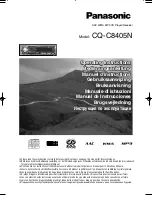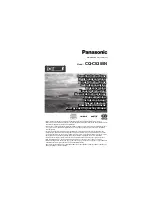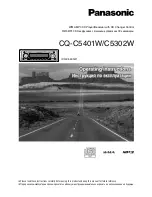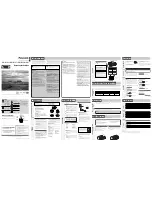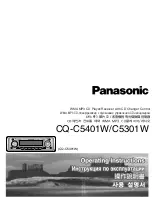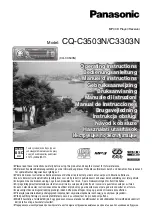
Philips Semiconductors
Product data sheet
SC28L91
3.3 V or 5.0 V Universal Asynchronous
Receiver/Transmitter (UART)
2004 Oct 21
27
CR—Command Register
CR is a register used to supply commands to the UART. Multiple
commands can be specified in a single write to CR as long as the
commands are non–conflicting, e.g., the ‘enable transmitter’ and
‘reset transmitter’ commands cannot be specified in a single
command word.
CR COMMAND REGISTER
ÁÁÁÁ
ÁÁÁÁ
Addr
ÁÁÁÁÁ
ÁÁÁÁÁ
Bit 7
ÁÁÁÁÁ
ÁÁÁÁÁ
BIT 6
ÁÁÁÁ
ÁÁÁÁ
BIT 5
ÁÁÁÁÁ
ÁÁÁÁÁ
BIT 4
ÁÁÁÁÁ
ÁÁÁÁÁ
BIT 3
ÁÁÁÁ
ÁÁÁÁ
BIT 2
ÁÁÁÁÁ
ÁÁÁÁÁ
BIT 1
ÁÁÁÁÁ
ÁÁÁÁÁ
BIT 0
ÁÁÁÁ
ÁÁÁÁ
CR
ÁÁÁÁÁÁÁÁÁÁÁÁÁÁÁÁ
ÁÁÁÁÁÁÁÁÁÁÁÁÁÁÁÁ
MISCELLANEOUS COMMANDS
ÁÁÁÁÁ
ÁÁÁÁÁ
Disable Tx
ÁÁÁÁ
ÁÁÁÁ
Enable Tx
ÁÁÁÁÁ
ÁÁÁÁÁ
Disable Rx
ÁÁÁÁÁ
ÁÁÁÁÁ
Enable Rx
ÁÁÁÁ
ÁÁÁÁ
0x02
ÁÁÁÁÁÁÁÁÁÁÁÁÁÁÁÁ
ÁÁÁÁÁÁÁÁÁÁÁÁÁÁÁÁ
See Text of Channel Command Register
ÁÁÁÁÁ
ÁÁÁÁÁ
1 = Yes
0 = No
ÁÁÁÁ
ÁÁÁÁ
1 = Yes
0 = No
ÁÁÁÁÁ
ÁÁÁÁÁ
1 = Yes
0 = No
ÁÁÁÁÁ
ÁÁÁÁÁ
1 = Yes
0 = No
NOTES:
Access to the miscellaneous commands should be separated by 3 X1 clock edges. A disabled transmitter cannot be loaded.
CR[7:4]—Miscellaneous Commands
Execution of the commands in the upper four bits of this register
must be separated by 3 X1 clock edges. Other reads or writes
(including writes to the lower four bits) may be inserted to achieve
this separation.
CR[7:4]—Commands
0000
No command.
0001
Reset MR pointer. Causes the MR pointer to point to
MR1.
0010
Reset receiver. Resets the receiver as if a hardware
reset had been applied. The receiver is disabled and
the FIFO is flushed.
0011
Reset transmitter. Resets the transmitter as if a hard-
ware reset had been applied.
0100
Reset error status. Clears the Received Break, Parity
Error, and Overrun Error bits in the status register
(SR[7:4]). Used in character mode to clear OE status
(although Received Break, PE and FE bits will also be
cleared) and in block mode to clear all error status after
a block of data has been received.
0101
Reset break change interrupt. Causes the break detect
change bit in the interrupt status register (ISR[2]) to be
cleared to zero
0110
Start break. Forces the TxD output Low (spacing). If the
transmitter is empty the start of the break condition will
be delayed up to two bit times. If the transmitter is ac-
tive the break begins when transmission of the charac-
ter is completed. If a character is in the TxFIFO, the
start of the break will be delayed until that character, or
any other loaded subsequently are transmitted. The
transmitter must be enabled for this command to be
accepted.
0111
Stop break. The TxD line will go High (marking) within
two bit times. TxD will remain High for one bit time be-
fore the next character, if any, is transmitted.
1000
Assert RTSN. Causes the RTSN output to be asserted
(Low).
1001
Negate RTSN. Causes the RTSN output to be negated
(High)
1010
Set Timeout Mode On. The receiver in this channel will
restart the C/T as the receive character is transferred
from the shift register to the RxFIFO. The C/T is placed
in the counter mode, the START/STOP counter com-
mands are disabled, the counter is stopped, and the
Counter Ready Bit, ISR[3], is reset. (See also Watch-
dog timer description in the receiver section.)
1011
Set MR pointer to ‘0’
1100
Disable Timeout Mode. This command returns control
of the C/T to the regular START/STOP counter com-
mands. It does not stop the counter, or clear any pend-
ing interrupts. After disabling the timeout mode, a ‘Stop
Counter’ command should be issued to force a reset of
the ISR[3] bit
1101
Not used.
1110
Power Down Mode On. In this mode, the UART oscilla-
tor is stopped and all functions requiring this clock are
suspended. The execution of commands other than
disable power down mode (1111) requires a X1/CLK.
While in the power down mode, do not issue any com-
mands to the CR except the disable power down mode
command. The contents of all registers will be saved
while in this mode. It is recommended that the transmit-
ter and receiver be disabled prior to placing the UART
into power down mode.
1111
Disable Power Down Mode. This command restarts the
oscillator. After invoking this command, wait for the os-
cillator to start up before writing further commands to
the CR.
CR[3]—Disable Transmitter
This command terminates transmitter operation and reset the
TxRDY and TxEMT status bits. However, if a character is being
transmitted or if a character is in the TxFIFO when the transmitter is
disabled, the transmission of the character(s) is completed before
assuming the inactive state.
CR[2]—Enable Transmitter
Enables operation of the transmitter. The TxRDY and TxEMT status
bits will be asserted if the transmitter is idle.
CR[1]—Disable Receiver
This command terminates operation of the receiver immediately—a
character being received will be lost. The command has no effect on
the receiver status bits or any other control registers. If the special
multi-drop mode is programmed, the receiver operates even if it is
disabled. See Operation section.
CR[0]—Enable Receiver
Enables operation of the receiver. If not in the special wakeup mode,
this also forces the receiver into the search for start–bit state.































